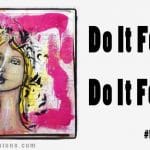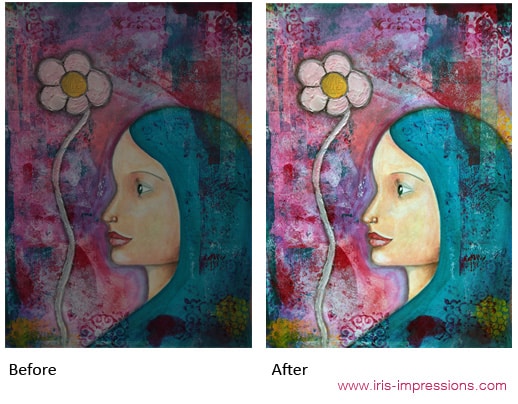I’ve made 13 short art journal videos in the last 20 days. That’s a reason in itself to celebrate! But what it also gives me the opportunity to do is examine my ways of working, my habits and my reasons. And then to share these insights with you in the hope that you find it useful too!
The thing I’ve noticed most of all from doing a challenge in which I only spend 15 minutes on a page and from recording the process, is that I want art to be easy and fun. That’s also why I’m sharing these videos. The art making is for me, but the video making is to share and give back, because I so appreciate everyone out there who shares their process and helps people like me get inspired, be entertained and get better!
It would be really easy NOT to share these videos of quick pages. After all they’re not masterpieces, nor super in-depth tutorials, but I think the key to what they do have is that they are fun and lighthearted. I want to show that you can make something nice in 15 minutes, that you don’t need to take it too seriously, that it can be beautiful or it can be average.
I think a lot of us feel held back by the thought that whatever we do (and especially whatever we share) needs to be somehow GOOD or MEANINGFUL. We think it has to be WORTHY. And then we attach a load of restrictions on ourselves in terms of what fulfills those criteria. What I’m saying is: it doesn’t have to be any of those things. Let go of the harsh judgements and requirements or the worry of what others may think, and instead do it for fun. Do it because it makes you feel joyful.
In sharing everything I attempt (even the messes and fuckups) I’m hoping that you get inspired to make art too and embrace the joy and let things be what they are. Let’s remove the pressure and let ourselves play!
Also, in case you were wondering, the days in November for which there are no videos are simply because I didn’t have the time or capability to film on those days, not because I’m filtering what I share.
Here are 3 of my favourite videos, and as a bonus the 4th video is the fuckup. Important! I call it a fuckup tongue in cheek. I am not feeling badly or being down on myself, I’m just being humorous because I don’t particularly like that page, but I see it as part of the process and I fully accept it and love it in its own way. I encourage you to do the same with your ‘oopsies’, love them and let go.
Day 19: Smudgy smudgy with oil pastels & oil bar
Day 5: Neocolor II and stenciling fun
Day 9: Drippy drippy inks
Day 12: A weird alien type person, wtf??




